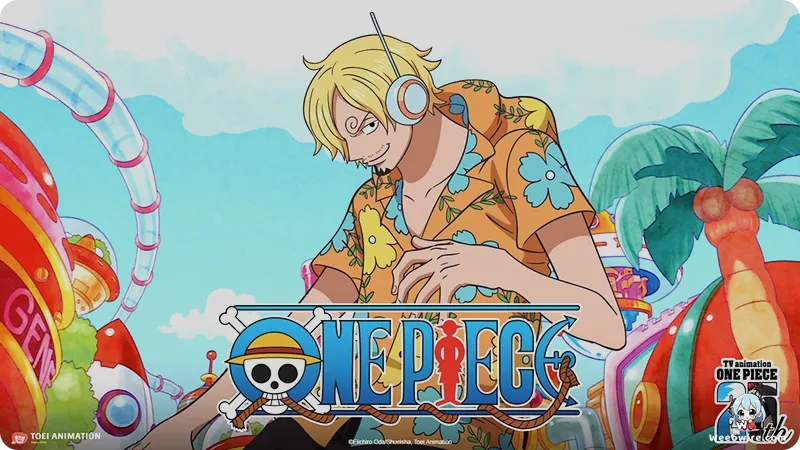The Secret History of the Straw Hats: Hidden Trivia and Creative Mandates That Define Eiichiro Oda's One Piece

Eiichiro Oda’s One Piece is recognized globally not only for its expansive narrative scope and iconic characters but also for the intricate, often unseen production choices and creative rules that form the foundation of its mythology. While millions worldwide follow Monkey D. Luffy’s quest for the ultimate treasure, the franchise’s sustained success is cemented by fascinating, often overlooked facts that reveal the depth of Oda’s creative commitment. Examining these hidden details provides dedicated fans with a deeper appreciation for the series’ enduring appeal.
The Strategic Renaming of Sanji
One of the most revealing pieces of trivia concerns the beloved Straw Hat cook, Sanji. It is widely documented that Oda initially planned to name the character 'Naruto' during the foundational planning stages of the series. However, as the debut of Masashi Kishimoto’s Naruto manga approached, its rapid ascent in Weekly Shonen Jump necessitated a strategic change. To prevent any audience confusion or the appearance of direct rivalry between two major titles, Oda swiftly renamed the character Sanji. This crucial pivot ensured that the chef retained a unique identity, defined by his culinary expertise and unwavering chivalry, independent of the comparisons that would have inevitably shadowed a character named after the future Hokage.
Luffy’s Conceptual Lineage and Numerical Wordplay
The protagonist himself, Monkey D. Luffy, also boasts a surprising conceptual lineage. The version known today is the culmination of various prototypes, most famously documented in Oda’s preliminary one-shot, Romance Dawn. In the earliest iteration, the hero was Crescent-Moon Gally, possessing slightly different characteristics and motivations while still pursuing treasure.

Furthermore, Luffy’s signature ability, the Gomu Gomu no Mi (Rubber-Rubber Fruit), is anchored in an ingenious numerical pun accessible primarily to Japanese speakers. The Japanese pronunciation of the numbers 5 and 6 (Go and Mu) combine to form ‘Gomu.’ Oda frequently employs goroawase (Japanese numerical wordplay) to embed subtle references throughout the manga, making the number 56 a continuous, secret nod to Luffy’s power.
Oda’s Strict Mandate: No Romance Among the Core Crew
Perhaps the most sacred and strictly enforced creative mandate governing One Piece is Oda’s absolute prohibition on explicit romance among the core crew. Oda has consistently asserted that the narrative’s focus must remain exclusively on the grand adventure, arguing that romantic subplots would dilute the pure spirit of camaraderie and piracy that defines the Straw Hat unit. He frames the crew dynamic as a functional family driven by a shared vision, rather than romantic interests. Although minor elements of admiration exist—such as Sanji's exaggerated devotion to Nami and Robin, or Boa Hancock's fierce, yet unrequited, affection for Luffy—these never develop into formal relationships that dominate the central storyline. This choice, unusual for a long-running shonen series, is crucial for preserving the core themes of freedom and the relentless pursuit of dreams, maintaining the unique, platonic bonds cherished by the fanbase.
Global Geography and Historical Inspirations
Oda’s meticulous approach extends beyond character rules to sophisticated world-building that incorporates real-world history and global geography. Numerous locations in the Grand Line are directly inspired by Earthly sites. The shipbuilding metropolis of Water 7, for instance, is heavily modeled on Venice, Italy, complete with its characteristic canals. Similarly, the desert kingdom of Alabasta draws deep inspiration from the cultures and architecture of ancient Egypt and North Africa. This blending of global culture and pop culture—where characters like Emporio Ivankov are inspired by Tim Curry’s role in The Rocky Horror Picture Show—gives the One Piece universe a profound sense of realism and diversity.
The Unwavering Commitment of the Japanese Voice Cast
Finally, the immense dedication of the anime production team, particularly the Japanese voice cast, is a cornerstone of the series’ enduring appeal. Mayumi Tanaka, who voices Monkey D. Luffy, is celebrated for maintaining the character's unique, explosive vocal energy for over two decades across thousands of episodes. The commitment of the entire original cast—including veterans like Kazuya Nakai (Zoro) and Akemi Okamura (Nami)—to their roles over such an extended duration is nearly unparalleled in the industry. Tanaka’s ability to sustain the youthful exuberance of a 19-year-old pirate is a feat of vocal discipline, cementing the Straw Hats' voices as a consistent and comforting presence for multiple generations. These behind-the-scenes facts, from Oda’s narrative constraints to the unwavering performances of the voice cast, underscore the artistic integrity that fuels One Piece’s unparalleled global success.
Credits
One Piece
Author
Eiichiro Oda
Cover Art
Eiichiro Oda
Studio
Toei Animation
Publisher
Shueisha
Producers





